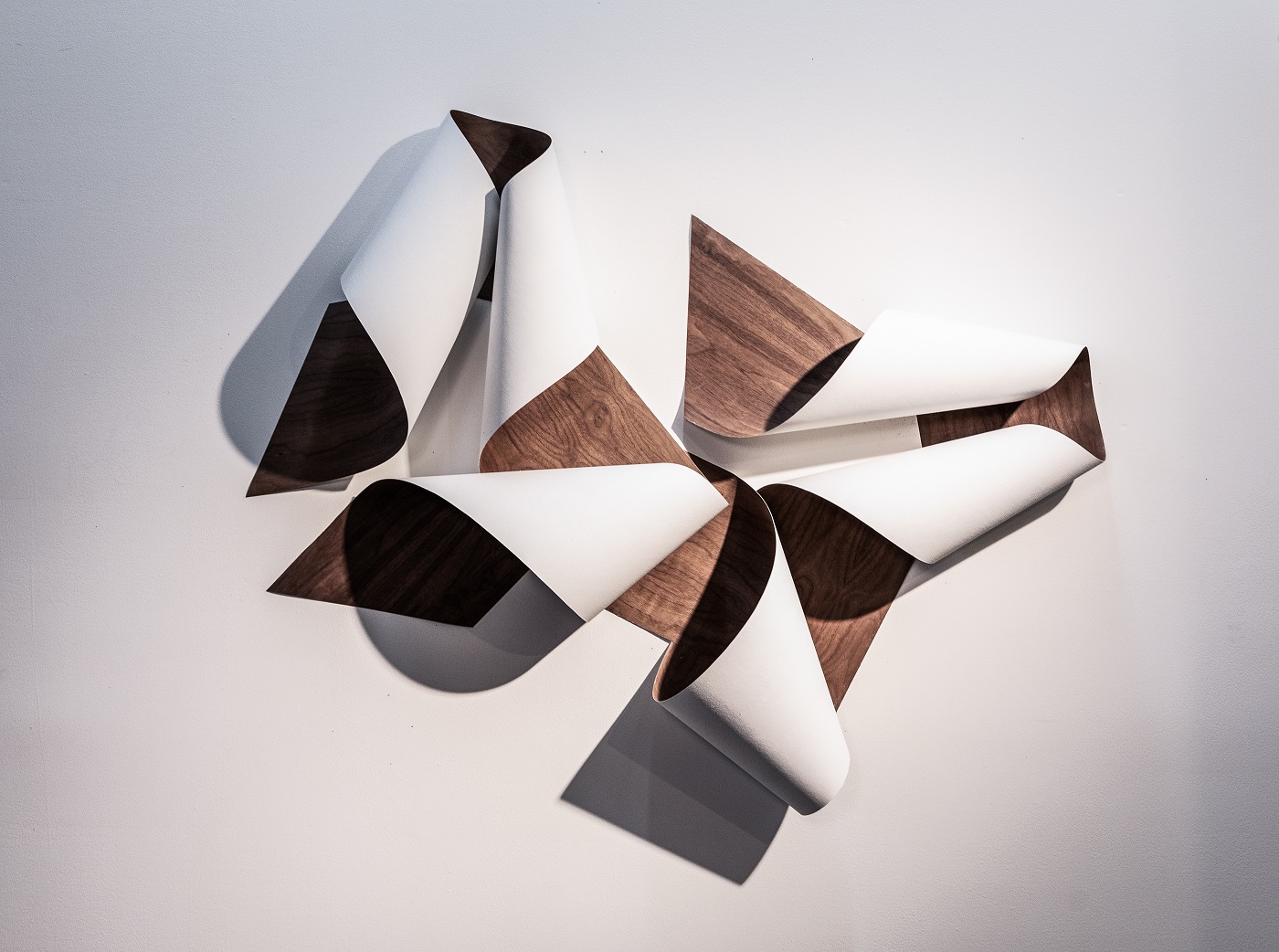Washington, DC—At its annual meeting in March, the Collectors Committee of the National Gallery of Art made possible the acquisition of Etude (1969) by Simon Hantaï (1922–2008), from his series of the same name.
“This year, the Collectors Committee’s selection brings the Gallery its first painting by Simon Hantaï—a work made at the pinnacle of his career,” said Earl A. Powell III, director, National Gallery of Art. “We are very grateful to the Collectors Committee, which enables the Gallery to continually enhance its holdings of contemporary art.”
The Collectors Committee discretionary fund for photographs, drawings, and prints also supported the acquisition of a portfolio of screenprints by Andy Warhol (1928–1987) as well four photographs by Robert Heinecken (1931–2006). In these works, both Warhol and Heinecken address ideas about the pervasiveness of the American news media.
Etude by Simon Hantaï
Born in Hungary, Hantaï settled in France in 1948 and joined the circle around André Breton. After experimenting in the 1950s with a variety of surrealist-inspired painting techniques, he invented a method of pliage (folding) in 1960 that defined the rest of his career.
Hantaï’s process entailed knotting a loose canvas in clumps on the floor, painting it in one of several monochrome colors, and then flattening and stretching it, revealing a dramatic image. The Meun series of 1968 was the first in which he left parts of the primed canvas unpainted, allowing white to penetrate the colored forms. This work is from his next series, the Etudes, which is arguably the most important series of his career. At once fractured and sublimely decorative, it bears a strong resemblance to the cut-outs of Henri Matisse, but Hantaï learned just as much from Jackson Pollock’s horizontal method, physical approach, and all-over composition.
Although little known in the U.S., Hantaï was a major figure in France, inspiring the Support/Surface group in particular. An upcoming retrospective at the Centre Pompidou, Paris, in 2013 will bring him international attention. The Gallery’s collection includes three drawings by the artist from the Rosenwald Collection, but this is its first painting by Hantaï.
Prints and Photographs
The Gallery acquired Andy Warhol’s celebrated portfolio, Flash—November 22, 1963 (1968). Four and a half years after President John F. Kennedy’s assassination, Warhol revisited the shocking events in a portfolio that includes 11 screenprints and 11 double-sided texts, the latter based on newsflashes from Dallas. The portfolio’s cover features the front page of the New York World-Telegram newspaper published on the day of Kennedy’s assassination, with its headline printed in unprecedented four-inch type: “PRESIDENT SHOT DEAD,” which Warhol blanketed with a template of cheery flowers—a juxtaposition that is not only anomalous but seems irreverent. Warhol claimed to have had almost no reaction to the news of President Kennedy’s death, but his obsession with it—as evidenced by this portfolio and other works—suggests otherwise.
Robert Heinecken’s Newswomen, Suite B (1984), was acquired with the Collectors Committee discretionary fund for photography. A unique piece consisting of four 20 by 24-inch Polaroid (dye diffusion transfer prints) portraits of news anchors, it is part of an extended examination Heinecken made between 1980 and 1986 of the impact of television on contemporary American life. For this work, he photographed three anchorwomen, all with similar hairstyles, skin tones, and expressions, and combined all three images into the fourth and final composite portrait, hinting that the media is instilling into the collective consciousness an image of how a successful woman should look and act.
Collectors Committee
The Collectors Committee has made possible the acquisition of more than 300 works of art since the committee was formed in 1975. Approximately half of these acquisitions have been works by living artists. Founding benefactor Paul Mellon asked Ruth Carter Stevenson, chair of the Gallery’s board of trustees from 1993 to 1997, to be the first chair of the Collectors Committee. Denise Saul and Barry Berkus, both major collectors of 20th-century art, are the current co-chairs of the Collectors Committee. Berkus, who resides in Santa Barbara, is the founder and president of B3 Architects and Berkus Design Studio. Saul, a New York resident, is a leading cultural philanthropist.



 Saving...
Saving...